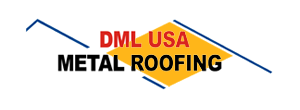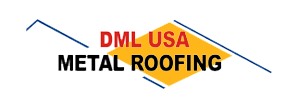Energy-efficient roofing systems are not just a trend but a smart investment that can substantially decrease energy bills while boosting home comfort and value. If you’re keen on understanding how these roofing solutions can benefit your home, here’s a quick rundown:
- Cost Savings: Reduce utility bills by up to 25%.
- Durability: Extend roof lifespan with less maintenance.
- Home Value: Increase your home’s resale value and appeal.
- Environmental Impact: Lower energy consumption and carbon footprint.
- Insurance Benefits: Potentially lower premiums due to improved resilience.
In today’s climate-conscious world, minimizing energy consumption is crucial, and roofing systems that reflect more sunlight and reduce heat absorption are a step in that direction. According to industry research, increasing the Solar Reflectance Index (SRI) of your roof can significantly lower surface temperatures, translating into substantial savings on cooling costs.
I’m Adam Kadziola, and with my extensive experience at DML USA Metal Roofing, I’ve seen how energy-efficient roofing systems can transform homes. Our commitment to quality ensures that you receive not only an energy-efficient roof but also a robust and enduring solution for your home.

What Makes a Roof Energy Efficient?
When it comes to energy-efficient roofing systems, two key factors play a crucial role: Solar Reflectance Index (SRI) and Ventilation. Understanding these elements can help you make informed decisions about your roof and its impact on your home’s energy efficiency.
Solar Reflectance Index (SRI)
The Solar Reflectance Index is a measure of a roof’s ability to reflect solar heat and release absorbed heat. It combines two critical properties: reflectivity and thermal emissivity.
Reflectivity: This is how well a roof reflects sunlight. A higher reflectivity means less heat is absorbed, keeping your home cooler. Light-colored roofs or those with special coatings can reflect up to 90% of sunlight, reducing the heat that enters your home.
Thermal Emissivity: This indicates how well a roof releases absorbed heat. Materials with high emissivity cool down faster, preventing heat from radiating into your living spaces.

Increasing your roof’s SRI can lower its surface temperature by over 13 degrees, leading to a 15–20% reduction in energy costs, according to the Lawrence Berkeley National Laboratory.
Ventilation
Proper ventilation is vital for maintaining a cool attic and, by extension, a cooler home. Effective airflow can prevent heat buildup in the attic, which can reach temperatures as high as 160 degrees Fahrenheit on hot days. Without adequate ventilation, this heat will eventually seep into your home, causing your air conditioning system to work harder.
Airflow: Good ventilation ensures that hot air escapes from your attic, replaced by cooler air. This not only helps in regulating attic temperature but also reduces the risk of roof damage from excessive heat.
Attic Temperature: Keeping the attic temperature in check is crucial. A well-ventilated attic can significantly decrease the temperature difference between the attic and the living space, enhancing overall energy efficiency.
For optimal performance, aim for a ventilation ratio of 1:300 (1 square foot of ventilation for every 300 square feet of roof surface). This balance helps maintain a comfortable home environment and prolongs the lifespan of your roof.
By focusing on these elements, you can ensure that your roof not only protects your home but also contributes to energy savings and environmental sustainability. In the next section, we’ll explore the different types of energy-efficient roofing systems and how they can further improve your home’s efficiency.
Types of Energy-Efficient Roofing Systems
Choosing the right roofing system can make a world of difference in your home’s energy efficiency. Let’s explore three key types: Metal Roofing, Advanced Coatings, and Innovative Designs. Each offers unique benefits that contribute to an energy-efficient home.
Metal Roofing
Metal roofing is at the forefront of energy-efficient roofing systems. Known for its reflective coatings and high Solar Reflectance Index (SRI), metal roofing can significantly reduce heat absorption. This means your home stays cooler, and you save more on energy bills.
Reflective Coatings: These coatings improve the roof’s ability to reflect sunlight. A metal roof with reflective coatings can lower roof surface temperatures by up to 60 degrees, according to DML USA Roofing.
High SRI: Metal roofs often feature a high SRI, which measures how well the roof reflects and emits solar heat. This property is crucial for maintaining a cooler home environment.
Metal roofs are not only energy-efficient but also durable, often lasting over 50 years with minimal maintenance. They are a smart investment for homeowners focused on sustainability and cost savings.
Advanced Coatings
Advanced coatings are game-changers in energy-efficient roofing. These solar-reflecting technologies improve the performance of various roofing materials, including asphalt shingles and tiles.
Solar-Reflecting Technology: By reflecting more sunlight, these coatings reduce the amount of heat that penetrates your home. This results in lower cooling costs and increased comfort.
Improved Performance: Coatings can be applied to existing roofs, enhancing their energy efficiency without the need for a complete roof replacement. This is an excellent option for homeowners looking to upgrade their current roof.
Advanced coatings offer a cost-effective way to boost your roof’s energy efficiency, especially if you’re not ready for a full roof replacement.
Innovative Designs
Innovative designs in roofing focus on improved airflow and the use of modern materials. These features not only improve energy efficiency but also add aesthetic value to your home.
Improved Airflow: Roofing systems that incorporate better ventilation designs help maintain a consistent attic temperature. This reduces the strain on your HVAC system and extends its lifespan.
Modern Materials: New materials are being developed to improve energy efficiency. For example, some polymer shingles mimic traditional materials but offer better reflectivity and durability.
These innovations make it easier than ever to choose a roof that is both functional and attractive, ensuring your home remains energy-efficient while boosting its curb appeal.
By selecting the right type of energy-efficient roofing system, you can enjoy significant savings on energy bills, increased property value, and a more comfortable living environment. In the next section, we’ll dig into the benefits of these systems and how they can positively impact your home and wallet.
Benefits of Energy-Efficient Roofs
Opting for an energy-efficient roof isn’t just about keeping your home cool; it offers a range of benefits that extend beyond immediate comfort. Let’s explore how these roofing systems can lead to cost savings, boost property value, and improve HVAC longevity.
Cost Savings
Energy-efficient roofs can substantially reduce your utility bills. By reflecting sunlight and reducing heat absorption, these roofs decrease the need for air conditioning during hot months. In fact, homes with energy-efficient roofs can save up to 25% on energy bills annually.

Moreover, many states offer tax credits and rebates for installing energy-efficient roofing systems. This means you not only save on monthly expenses but also benefit from financial incentives that lower the overall cost of installation.
Property Value
Investing in an energy-efficient roof can significantly increase your home’s resale value. A roof that reduces energy costs is a strong selling point for potential buyers, making your property more marketable.
Homebuyers are increasingly looking for sustainable and cost-effective features, and an energy-efficient roof checks both boxes. This can lead to a quicker sale and potentially a higher selling price.
HVAC Longevity
An energy-efficient roof doesn’t just save money on energy bills; it also extends the lifespan of your HVAC system. By reducing the amount of heat that enters your home, these roofs lessen the workload on your air conditioning unit.
Less strain on your HVAC system means fewer repairs and a longer operational life, translating to additional savings over time. A well-maintained HVAC system also ensures consistent indoor comfort, regardless of the weather outside.
In summary, energy-efficient roofs offer tangible benefits that go beyond immediate energy savings. They improve your home’s value, reduce operational costs, and contribute to a more sustainable living environment. Up next, we’ll address some common questions about these roofing systems to help you make an informed decision.
Frequently Asked Questions about Energy-Efficient Roofing Systems
What is the most energy-efficient roof system?
When it comes to energy efficiency, metal roofs are often the top choice. These roofs are designed with high reflectivity, meaning they can bounce back a significant amount of the sun’s rays. This helps keep your home cooler and reduces the need for air conditioning. According to studies by the U.S. Department of Energy, metal roofing can cut energy costs by up to 40% during the summer months.
But metal roofs aren’t the only option. Advanced coatings and innovative designs can also improve energy efficiency. These include special paints and finishes that increase a roof’s ability to reflect sunlight and release absorbed heat.
Are energy-efficient roofs more expensive?
The initial cost of installing an energy-efficient roof can be higher than traditional roofs. However, the long-term savings often outweigh the upfront expense. Energy-efficient roofs can lower utility bills by up to 25%, and many homeowners find that they recoup the initial investment through these savings within a few years.
Additionally, there are financial incentives to consider. Many states offer tax credits and rebates for installing energy-efficient roofing systems. These programs can significantly reduce the overall cost, making the investment more attractive.
What is the best energy-efficient roofing material?
Metal roofing is a standout when it comes to energy efficiency. It offers excellent reflectivity, durability, and can be improved with reflective coatings for even greater performance. Metal roofs are also lightweight, reducing the structural stress on your home.
For those looking beyond metal, advanced coatings can be applied to various roofing materials to improve their energy performance. These coatings often include solar-reflecting technology that improves a roof’s ability to reflect sunlight and reduce heat absorption.
Lastly, consider innovative designs that improve airflow and use modern materials to boost energy efficiency. These designs can include features like improved ventilation systems that keep attic temperatures down, further reducing the need for air conditioning.
In conclusion, while the initial cost of energy-efficient roofing systems may be higher, the long-term benefits and potential savings make them a smart investment. Whether you choose metal, advanced coatings, or innovative designs, you’ll be contributing to a more sustainable and cost-effective home.
Next, we’ll wrap up with some final thoughts on choosing the right energy-efficient roof for your needs.
Conclusion
Choosing an energy-efficient roofing system is more than just a decision about saving on utility bills—it’s an investment in the future of your home. At DML USA Metal Roofing, we understand the importance of durability, cost savings, and environmental impact. That’s why our metal roofs are designed to offer all three.
Durability is a cornerstone of our roofing systems. Our metal roofs are built to withstand harsh weather conditions, including high winds, heavy snow, and even wildfires. They have a 120-mph wind rating and are classified as a noncombustible roofing material with a Class A fire rating, which is the highest available. This means you can rest easy knowing your home is protected.
But the benefits don’t stop there. Our metal roofs are also energy-efficient, thanks to their high reflectivity and emissivity. They reflect the sun’s rays away from your home, keeping it cooler in the summer and reducing the need for air conditioning. This can cut your energy costs by up to 40% during the hottest months.
Moreover, installing a metal roof can make you eligible for energy tax credits. These financial incentives can help offset the initial cost of your roof, making the investment even more attractive. With these savings, many homeowners find that their metal roof pays for itself over time.
In summary, when you choose a metal roof from DML USA Metal Roofing, you’re not just getting a roof—you’re investing in a long-lasting, energy-efficient solution that benefits both your wallet and the environment. Ready to explore your options? Check out our products page to learn more about how we can help you reflect and protect with confidence.

